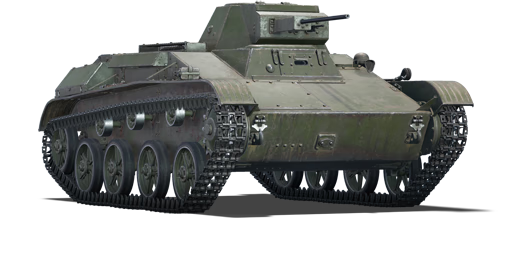



The T-60 was a Soviet light tank, developed in the late 1930s as a replacement for the amphibious T-38 scout tank. The team around designer Nicholas Astrov started designing the tank at Moscow Factory No. 37 in 1938, and two prototypes designated T-38A and T-38B were produced. The former was manufactured from 1940 as the T-40 light amphibious tank. The T-60 was considered a stop-gap tank after the German attack on the Soviet Union, until factories could produce enough T-34s and KV tanks. The T-60 used the chassis from the T-40 but gave up its ability to float for thicker armour. The T-60 was initially to be armed with a 12.7 mm DShK machine gun, but the army demanded stronger armament, so a 20 mm TNSh cannon was chosen instead. The TNSh was a tank version of the aircraft ShVAK cannon and, as such, had very low penetration characteristics, being able to penetrate only 15 mm of armour at 500 m. Such gun characteristics were not enough to engage newer, up-armoured German tanks, so the T-60 was moved into the role of an infantry support tank. The T-60 served as a base for an upgunned and uparmoured version which would later become the T-70 tank. The T-60 served through the entire war, and Romania modified 34 captured T-60s into their domestic TACAM T-60 tank destroyer.
The T-60 was introduced during the Closed Beta Test for Ground Forces before Update 1.41. Thanks to the combination of a mobile chassis and strong, sloped frontal armour, the T-60 is well suited for combat according to almost any tactic. The gun, however, suffers from very poor ballistic properties and struggles to penetrate most opponents frontally, so flanking is advised while utilising the T-60. Additionally, it features a very long reload once each relatively small magazine is expended.
| Belt | Belt filling | Armor penetration (mm) at a distance: | |||||
|---|---|---|---|---|---|---|---|
| 10 m | 100 m | 500 m | 1000 m | 1500 m | 2000 m | ||
| AP-I/FI | 27 | 24 | 13 | 6 | 3 | 2 | |
| AP-I | 27 | 24 | 13 | 6 | 3 | 2 | |
| AP-I/AP-I/FI | 32 | 28 | 15 | 7 | 3 | 2 | |
| Belt | Belt filling | Armor penetration (mm) at a distance: | |||||
|---|---|---|---|---|---|---|---|
| 10 m | 100 m | 500 m | 1000 m | 1500 m | 2000 m | ||
| AP-I/API-T | 13 | 12 | 7 | 3 | 2 | 0 | |












Mobility | |
|---|---|
Protection |
|---|
Firepower | |
|---|---|